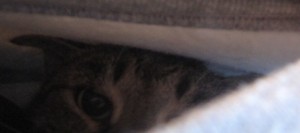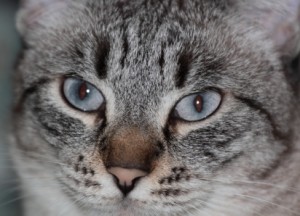On November 13th (see my “First steps” post) I revealed that I stumbled upon a sort of discovery. Well, it turns out that I hadn’t stumbled at all. I’d already mentioned this supposed “discovery” in previous posts. Sigh, I can’t remember everything I write, I s’pose. 😉 Well, anyway, since my “First Steps” post I have been doing some off and on research (so much to read, so little time…), and today I finally decided to post a few results, even though I still have to sift through a lot of literature. A seemingly endless task…
The “discovery” had to do with the antiapoptotic gene Bcl-x, which is related to Bcl-2 (=B-cell lymphoma 2) and has been linked both to tumour progression and chemoresistance. The overexpression of these two genes protects tumours from chemotherapy in many types of cancer, for instance in squamous cell carcinoma of the head and neck, or SCCHN (see: http://tinyurl.com/692n8b). Oh dear, there are so many studies on this topic but, in a nutshell, the Bcl family is bad news for all of us affected by cancer.
Chemoresistance, by the way, occurs when cancer cells are not affected by chemotherapy. They become immune to the attacks of these drugs. The consequence for chemoresistant myeloma and other cancer patients is obvious…I don’t need to spell it out.
Anyway, my starting point was a rather dated study, titled BCL-X Expression in Multiple Myeloma: Possible Indicator of Chemoresistance and published in 1998 in “Cancer Research” (abstract: http://tinyurl.com/69lxlz; full study: http://tinyurl.com/5wuyw7). Since it’s available for free online, I won’t go into too many details. But if you just read the Discussion part, you will see that Bcl-x is more likely to be detected in myeloma patients at relapse and correlates with chemoresistance. Bingo.
But let’s get to some potentially good news.
After skimming through that study, I googled the following words: “chemoresistance” and “myeloma.” One of the first links that popped up took me to one of Prof. Aggarwal’s many studies, the one titled Targeting chemoresistance in multiple myeloma cells by curcumin, quoted on the MMRF website.
This didn’t surprise me. I already knew that curcumin inhibits the evildoings of the Bcl family (there are heaps of studies on this). But then I wondered if there could be other natural plant extracts that inhibit it, too? The answer is a resounding YES! And, how odd!, I found all this info on my blog, just by doing a simple search. I hadn’t really made all these connections before now, and this made me think that I really must set up an Excel spreadsheet listing the specific targets of each supplement, in order to make some comparisons. For now, though, this is what I have found:
Bcl-2 inhibitors: nigella sativa (black cumin), gossypol, apogossypol, gambogic acid and omega-3.
Bcl-2 & Bcl-x inhibitors: curcumin, zerumbone, baicalein, resveratrol, ursolic acid, honokiol and capsaicin (=the “hot” stuff in red pepper). There may be others as well, but I stopped looking…for now. By the way, I have Pages on all of these extracts (see the right-hand side of my blog).
This bit of research has opened up a whole new world to me. And it also posed a good question: if I, with no scientific background and with only very meagre means at my disposal (a simple Internet connection), can…stumble upon a possibly useful connection/synergy between the natural and synthetic worlds, a connection that has the real potential to help cancer patients at the very least with the toxic side effects of chemo and possibly even with the treatments themselves (by making the tumour cells more susceptible to these drugs, e.g.), then why the heck don’t MORE cancer researchers devote MORE time to investigating this type of synergy?
I have answers, of course, but they only make me seethe. Eh.
To end on a happier note, I am having my bone mineral density test on Wednesday. This should be interesting…




